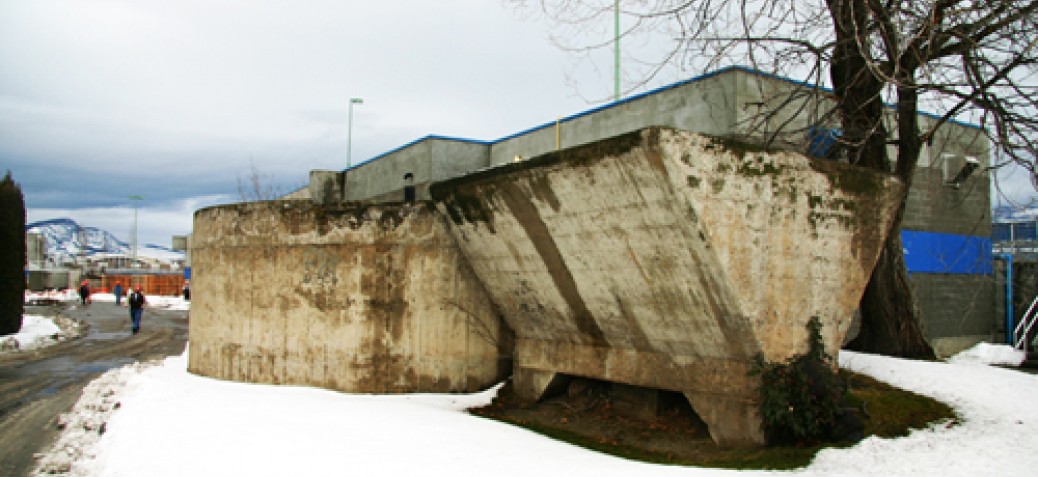Imhoff Tank
Place Description
The Imhoff Tank is located on a 6.5 hectare site that has housed the City’s wastewater treatment since 1913. Kelowna’s first sewage treatment facility, it consists of a two-part board-formed concrete structure, with a cylindrical Imhoff Tank with an interior Sludge Digestion Chamber and a trough-like Dosing Tank. It is oriented east-west, with the flow originally directed towards Okanagan Lake, and is located on the grounds of the City of Kelowna’s current Wastewater Treatment Facility.
Heritage Value
The Imhoff Tank is significant as an early and rare surviving piece of municipal infrastructure, one of the earliest known such systems in western Canada. German engineer Karl Imhoff (1876-1965) was considered a pioneer in urban drainage and wastewater disposal engineering. He first published the design for this system in his seminal work, “Pocketbook of Urban Sewerage” in 1906. This book is still published in Germany and in translations worldwide. There are no mechanical parts in an Imhoff tank, and this system is best suited to a population of 5,000 or less. Imhoff tanks comprised nearly half of the waste treatment works in North America by the mid-1930s. Built in 1913, the Imhoff Tank was designed by consulting engineers Canavan & Mitchell of Victoria. Sewage was fed into the tank, which had an internal Sludge Digestion Chamber, then flowed into a Dosing Tank; treated wastewater was then sprayed onto an adjacent Sprinkling Filter field with buried clay tile runs.
Currently situated adjacent to the City’s massive modern wastewater treatment plant, the Imhoff Tank represents the growth of city infrastructure over time, that parallels the growth of Kelowna from a modest settlement to a modern city. Additionally the Imhoff Tank is symbolic of Kelowna’s pioneering tradition of progressive wastewater management that continues up to the present day, a response to the region’s semi-arid climate and the importance of water management in ensuring the maintenance of the agricultural industry and the quality of the lakefront environment.
Character Defining Elements
Key elements that define the heritage character of the Imhoff Tank include its:
- location within the context of the City of Kelowna’s current Wastewater Treatment Facility
- two-part construction, with a cylindrical tank with internal Sludge Digestion Chamber, and a trough-like Dosing Tank, that reflects its original function
- board-formed construction
- remnants of the original metal roof and other metal parts




